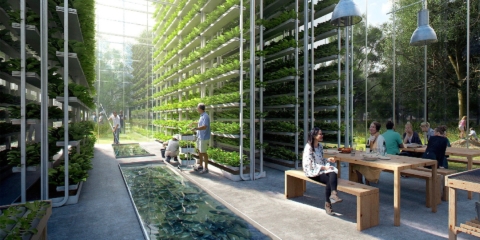Would you like to get notifications from Christian?
The world is about to change, as cutting-edge technology like the ChatGPT ROBOT is paving the way for more efficient and interconnected robots. We are revolutionizing how humans and machines work by combining artificial intelligence with humanoid robots. This technology differs from traditional robotics by incorporating large language models (LLMs), allowing for complex reasoning and more natural human-machine interaction.
The ChatGPT ROBOT is set to disrupt industries worldwide. OpenAI, the creator of ChatGPT, has invested in 1X, which develops humanoid robots designed to perform human jobs. Their robot, EVE, can pick up objects, pack and unpack boxes, and work alongside humans. However, this investment places OpenAI in direct competition with Elon Musk's Tesla bot.

chatgpt-robot-1x
With support from OpenAI's Startup Fund, 1X plans to scale up the manufacturing of EVE, their first commercially available android, in Norway and North America. Additionally, they are working on another bipedal android, NEO. These advanced robots have the potential to replace labor or nursing workers, offering new ways to tackle repetitive tasks and interact with humans.
The ChatGPT ROBOT utilizes VR for control, with an operator in a control center looking through the android's camera "eyes." This technology provides the potential for more natural and intuitive robot control. As 1X continues to recruit artificial intelligence experts, the future of robots is on the horizon.
Experts believe large language models like ChatGPT will transform how we use and interact with robots. George Strakhov, chief strategy officer at advertising company DDB EMEA, stated that generative AI would solve the two main problems we have with robots: their limited intelligence and their lack of understanding of human desires.
Robots powered by LLMs can act more dynamically, respond to environmental changes, and plan. This innovation will enable robots to "think through" steps to achieve user goals. Furthermore, the Linguistic User Interface (LUI) will allow us to communicate with robots using natural language, making them useful in a wider variety of situations.

chatgpt-robot-1x-003
As the ChatGPT ROBOT becomes part of our lives, we will see a shift in how we interact with technology. Microsoft, which invested $10 billion in OpenAI, has already demonstrated using ChatGPT to control robots with simple spoken commands. This advancement will make robots more accessible to people without programming skills.
The EVE robot from 1X has the potential to be the first widely available humanoid android, opening up a new world of possibilities. The collaboration between AI and humanoid robots will change how we live and work, offering new opportunities to create a better world.
In summary, the ChatGPT ROBOT will significantly impact our lives by revolutionizing human-machine interaction and redefining the future of work. As we continue to develop and embrace this technology, we will undoubtedly find innovative ways to use it for the betterment of society.
Author: Christian Kromme
First Appeared On: Disruptive Inspiration Daily
Do you want more of this kind of content? Subscribe to my 'Disruptive Inspiration Daily' newsletter. Do you find this content inspiring? Give it a 'like' or share the article with your network. This will help you and your network have a relevant timeline.
Which keynote best fits your needs?


Christian is a futurist and trendwatcher who speaks about the impact of exponential technologies like AI on organizations, people, and talents. Christian tailors his presentations to your audience's specific industries and needs.



Our world is changing at an exponential rate! A big tidal wave of digital transformation and disruption is coming at us fast. Many organizations see this wave as a threat and experience stress, but there are also organizations that just see this wave as an opportunity.

Imagine sitting with just 10-15 fellow executives at a premier location, gaining clarity on the impact of AI on your industry while enjoying an exquisite dining experience. These are not just meetings—they are transformative moments that will shape the future of your organization



In the future, 3D printing and generative design will allow for products to be designed in a more decentralized manner, and production will take place closer to the customer and fully on-demand. 3D printing technology will also allow for more customization and personalization of products.


The agricultural industry is ripe for disruption. Robotics, AI, and IoT are all technologies that have the potential to radically transform the way we grow food. In combination with vertical farming, these technologies could increase the efficiency and quality of agricultural products.

A human-centered society is one that puts people first and where technology is used to unite and empower people. It is a society that values biological life and dignity above all else. It is a society that recognizes the importance of human relationships and works to strengthen them. In a human-centered society, all members of the community are valued and treated with respect.


The future of healthcare is here. New technologies like AI, IoT, big data, and smart sensors make it possible to become the CEO of your own health. Imagine that your phone can listen to your voice and AI algorithms can detect small nuances in the tone of your voice that indicate specific diseases.
